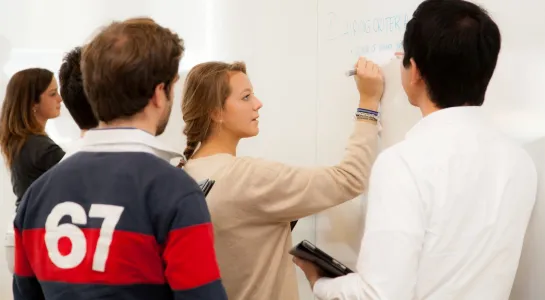
Future-Proofing Students Through Teaching Methods, Rather Than Processes
Constant progress in the socio-digital ecosystem drives a revision of teaching processes, just as the boundaries between universities and other higher education players are becoming increasingly fluid. In a rapidly changing landscape, education must allow them to develop increasingly transversal skills, without forgetting solid technical abilities
In recent years, the acceleration of change has marked a turning point in many elements of our lives: the environment has changed, new technologies – which are sometimes disruptive – continue to emerge, consumer tastes and demands have evolved further, new business models have been imposed and entire new industries have been created. Within this context, education is certainly not immune to radical transformations, especially with the introduction of technology. Some teaching models, such as online teaching, are now widely used. Regarding the online model in particular, very often it does not make the teaching experience as effective as it would be if applied correctly. In addition, constant progress in the socio-digital ecosystem drives a revision of teaching processes. Some in the debate even suggest that one day professors may be replaced by AI systems. At the time it was created, its evolution almost always represented a source of uncertainty, but its implications – both positive and negative – can be better understood through analysis and experimentation. As a result, interventions can be made to guide it towards interesting and perhaps challenging goals. Thought-provoking examples of humanoids already teaching in the classroom around the world include: NAO Robot (École Polytechnique Fédérale de Lausanne, Switzerland) interacts with students and creates an interactive environment; Pepper Robot (University of Birmingham, UK) is able to recognize faces and, to some extent, emotions and therefore adapt its response to the mood of students; and Sophia Robot (University of Las Palmas de Gran Canaria, Spain) answers questions and participates in discussions.
Technology is also responsible, albeit indirectly, for the emergence of other new players in the higher education scenario, such as YouTube channels and well-known international platforms – e.g. Coursera – that offer "educational contributions" or even entire courses online. The boundaries between universities and other higher education institutions are becoming increasingly fluid. A "rational" interaction between different actors (e.g. universities, international platforms, experts in the corporate world) through different models and methods (e.g. blended, online, traditional) allows very effective learning experiences to be created. The plurality of voices, perspectives and methods is itself transformed into another method to facilitate and amplify the development of skills, such as critical thinking and cross-generational and cross-country communication and collaboration.
In this context, what is the optimal trajectory to follow? The question concerns the essential knowledge and skills that will be needed in the near future that students should acquire in order to adapt to the evolution of the labor market. It is difficult to predict what the actual developments will be, and this represents a further source of uncertainty and ambiguity. Business processes are changing at an accelerated pace, the time to market – i.e. the time products and services take to reach the market – is increasingly reduced, and the needs and interests of workers take on a specific weight dictated by many factors (including the context of reference, generational belonging, the phase of the personal life cycle and professional ambition). All this makes it increasingly complicated to prepare students to be leading players in their futures. And this is not only because it is difficult to predict the future but, even further upstream, it is difficult to know what needs to be predicted. The future is a dynamic concept by definition and therefore the preparation of students must also be dynamic.
However, as stated in the literature, when there are many changes of different kinds, there is a risk of getting stuck at a decision-making crossroads, dictated by the uncertainty linked to the multiplicity of options to choose from.
A possible solution to get out of this impasse is to further emphasize the importance of teaching methods that allow students to develop transversal skills and behaviors such as adaptability, flexibility and proactivity to change. The ability to adapt, however, must be complemented by solid knowledge and technical skills. It must also be placed in a dynamic and long-term perspective for which learning is a continuous process – albeit a changing one – that spans our entire lives.
